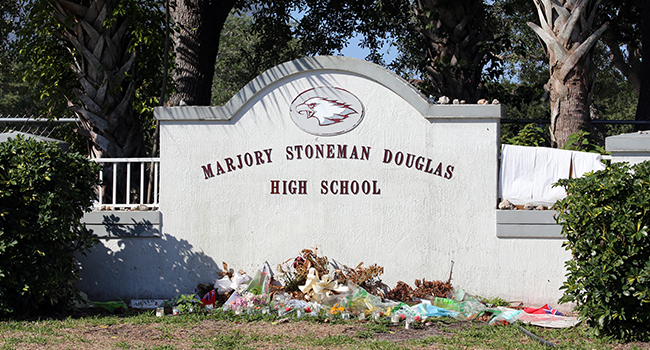
Marjory Stoneman Douglas Public Safety Commission Presents Final Report
The final report, which runs 458 pages, details the shooting’s timeline of events and dozens of recommendations for safety and security actions.
- By Jessica Davis
- January 04, 2019
The Marjory Stoneman Douglas High School Public Safety Commission presented its final report to state officials Wednesday in Tallahassee, Fla.
The commission, which consists of law enforcement officers, public officials and parents of the students murdered in the shooting, worked on the report investigating the Parkland school shooting for nine months. The final report, which runs 458 pages, details the shooting’s timeline of events and dozens of recommendations for safety and security actions. Many of the proposed recommendations came from mistakes and weaknesses highlighted in the commission’s preliminary report.
According to the commission’s chairman, Pinellas County Sheriff Bob Gualtieri, many of the recommended measures could have been implemented a long time ago if school safety had been made more of a priority, particularly by school districts themselves.
“There needs to be a sense of urgency,” he said. “And people need to understand that there’s an expectation and a rightful expectation on the part of parents: When you send your kids to school in the morning, there’s an expectation they’re going to come home alive in the afternoon and there are very basic things.”
Gualtieri acknowledged the issue of funding, but added that “there’s a whole bunch of things that don’t cost anything and the Legislature, if these districts won’t do it, should mandate that they implement these things and that they implement them immediately.”
The report now goes to Gov. Rick Scott, Gov.-elect DeSantis, Senate President Bill Galvano and House Speaker José Oliva. According to Galvano, the recommendations will be taken up at a meeting of the Senate Education meeting Tuesday.
Some of the commission’s recommendations for Florida schools include:
- Classrooms should have established safety measures such as safe areas for students to hide, and teachers should be able to cover door windows quickly
- Every school should have a clear policy for declaring a Code Red emergency lockdown, and all staff and faculty should have the power to call for a Code Red
- All campus gates should remain locked, unless staffed to prevent unauthorized access
- Schools must accurately report crime and safety incidents
- Student mental health and counseling records should be part of a student’s school records and follow them from campus to campus
- All Florida public schools should immediately provide law enforcement with live, real-time access to all school camera systems, and adequate training to access and operate the cameras
- School resource officers should be supervised more closely, and their primary responsibility should be safety and security
- All school resource officers should be issued rifles and bulletproof vests, and these items should be readily available to them on campuses
The commission is empaneled until 2023, and will identify areas that need further investigation and make additional recommendations. According to the report, many entities have been slow to make changes to security and safety.
“Even after the shooting and the implementation of new Florida law requiring certain safety measures, there remains non-compliance and a lack of urgency to enact basic safety principles in Florida’s K-12 schools,” the report reads. “All stakeholders — school districts, law enforcement, mental health providers, city and county governments, funding entities, etc. — should embrace the opportunity to change and make Florida schools the safest in the nation. There must be a sense of urgency — and there is not, across-the-board — in enhancing school safety.”
About the Author
Jessica Davis is the Associate Content Editor for 1105 Media.